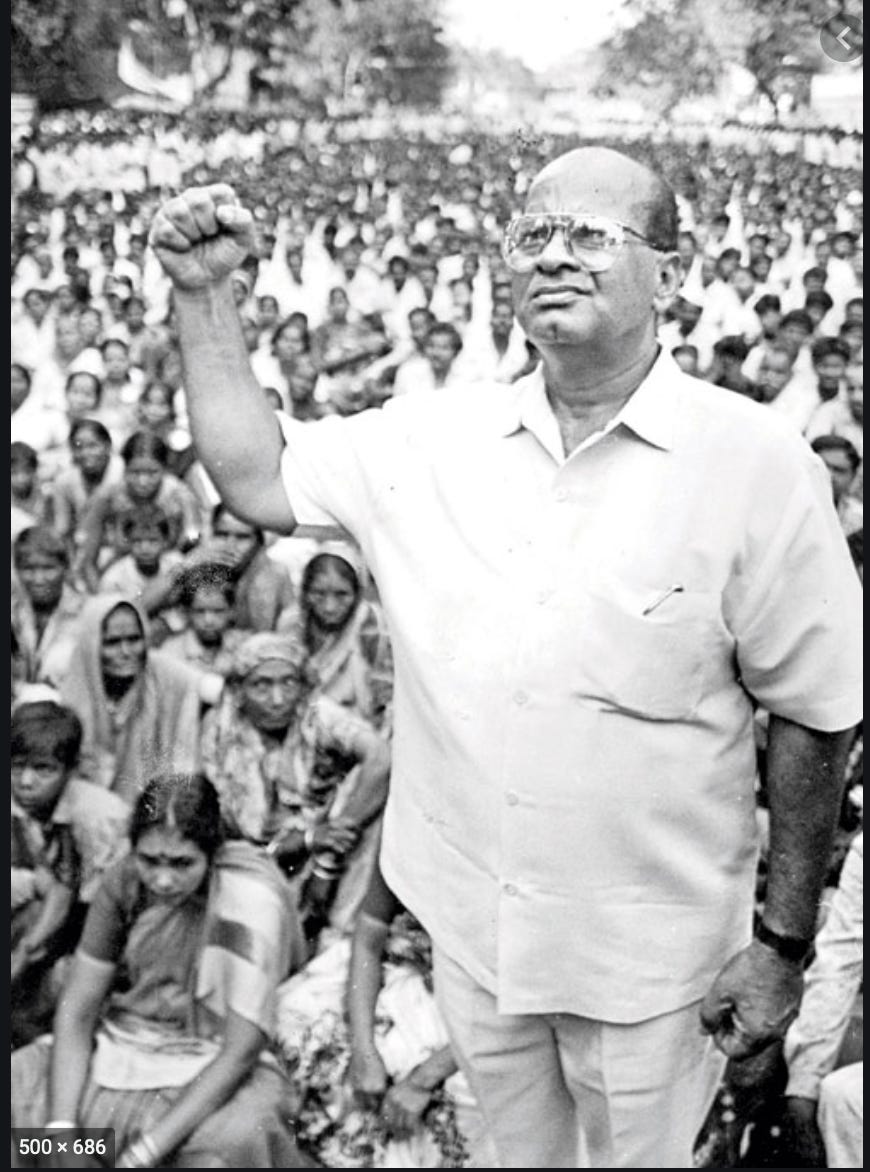
This series is to take lessons from historical events that had large scale impact on people behaviour and regulatory system
Today we will talk about The Great Textile Strike of 1980s which impacted the way Mumbai thought about unionized labour movement, led to demise of communism and rise of Shiv Sena in Mumbai. Mumbai city moved from being industrial to commerical city.
The big real impact of this event was on Indian labour laws which became much mellowed and liberalised . This also paved way for employment of contract labour instead of permanent labour across industries including PSUs.
Background
In late 1960s and finally in 1970s communism was getting popular in “Maximum city” like in most places across the world ..
Films like Namak Haraam (1973) , Kaala Patthar (1979), Sagina (1974) , Gaman (1978), Dastak (1970), Albert Pinto Ko Gussa Kyon Aata Hai (1981) , Mazdoor (1983) etc captured the nation ( in particular Mumbai ) mood on labour rights unlike in 2000s ..
While in 1960s & 70s communist dominated labour movements , in 1980s new unlikely labour hero emerged — Dr. Datta Samant .
Dr. Samant was a doctor by profession who had spent years treating workers for the occupational diseases that they suffered from. This exposed him to the horrifying conditions of the city’s industrial worker, and he began taking part in trade union activities. His big moment came when in Godrej Mills and Premier Automobiles he was able to get large increases in labour wages . Labour unions looked upto him for strategies to win in labour wage negotiations.
Such was his reputation that textile workers staged dharna infront of his house to lead them , even when he said he cannot do the same as per labour act. But finally he gave in and agreed to lead labour of Standard Mills in 1981. Soon other mill workers approached him.
By late 1981, Dr. Datta Samant was chosen by a large group of Bombay mill workers to lead them in a precarious conflict between the Bombay Millowners Association and the unions, thus rejecting the INTUC affiliated official trade union RMMS which had represented the mill workers for decades.
Strike that never ended ..
Lot of events preluded the strike which has been captured well in the book “ The 1982–83 Bombay Textile Strike and the Unmaking of a Labourers City” by Hub van Wersch .
But on 18th January 1982 something big happened.
In 18 January 1982, over 250000 workers affiliated to over 50 textile mills went on strike . This shut down of massive scale crippled Mumbai city and sent a scare among employers across industrial sectors and political parties.
Though the expectation was that the strike would last for a few months, as was usual, it went on . The textile mills never opened again.
This is where it becomes case study as it leads to many questions & theories
Why this movement did not succeed inspite of scale and impact it had on economy ??
Why Government did not intervene inspite of massive hardship faced by large section of workers ?
Why general people opinion turned against labour unions and struggles?
While it is difficult to pin point single reason .. there are multiple interesting theories on why this strike failed
Textile industries were already uncompetitive both in terms of mechanisation and labour rates and wanted an excuse to shift from Mumbai to other cities — This strike gave them reason to do so .
Government was scared that if they relent , it could lead to similar such strike at PSUs like Mumbai Docks which had larger implications
Labour unions were great optical tools for political parties to show that they are on side of oppressed. A newbie was threatening their hold so almost all political parties wanted him to fail.
Labour had weak staying power because of which within one year most of labour familes gave up and many went back to their villages . As the strike progressed through the months, Samant’s militancy in the face of government obstinacy led to the failure of any attempts at negotiation. This also broke unity among labour who disapproved of these militant tactics.
Well whatever may be the reason this did not end well
Poor loses again
After a prolonged and destabilizing confrontation, the strike collapsed with no concessions having been obtained for the workers. The closure of textile mills across the city leftover 150000 mill workers unemployed. In the succeeding years, most of the industry moved away from Bombay to Gujarat after decades of being plagued by rising costs and union militancy.



